Social Awareness
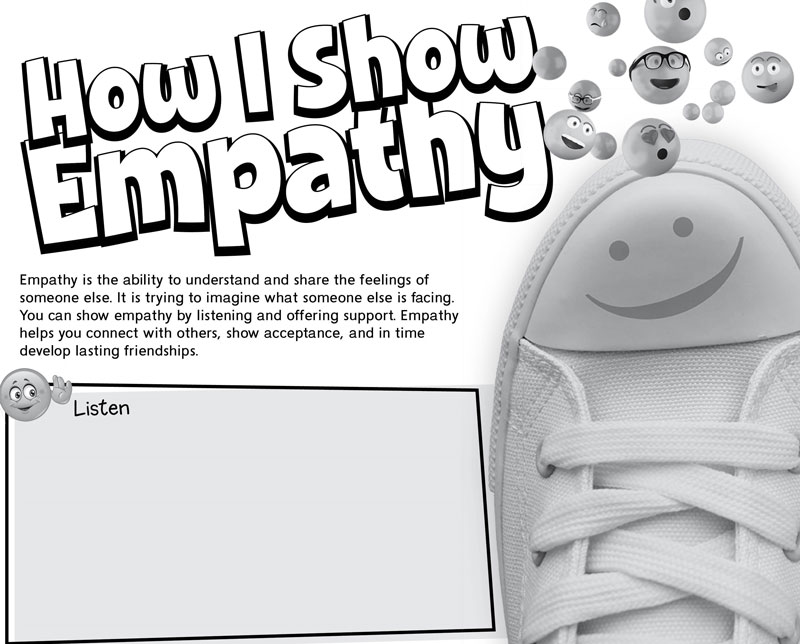
Find this activity in the student portfolio
Objective: Students will be able to demonstrate empathy and compassion for others.
Estimated Duration: 20 minutes
Description: Empathy is the ability to put yourself in the shoes of someone else and understand what they are feeling or experiencing.
Building an understanding of what others are feeling, how their own actions can have an impact on others, and why someone might be experiencing feelings at a particular time is an important life skill for students to develop.
It is important for students to learn empathy because it helps them to understand how others feel so they can respond appropriately to a situation. It also helps them build a sense of security and stronger relationships with others.
Empathy encourages tolerance and acceptance of others which will help build a more harmonious class and school environment.
This activity has students place themselves in someone else's shoes. They are asked to brainstorm ways they would show kindness, take another’s perspective, show acceptance, and listen when a friend or relative is going through a difficult time.
It might be helpful to offer some examples of difficult times for students, such as when someone has a disagreement with a friend, or gets left out of an activity, or when someone loses something that is special to them.
Teachable Moments: There are many ways you can help students build empathy and compassion for others:
- Model kindness and empathy to your students.
- Let your students know they are not alone and listen closely to them.
- Encourage empathy in your students and don’t force apologies; let them come at their own accord.
- Help your students name their feelings, as understanding their own feelings is an important step in understanding the feelings of others.
- Talk to your students about how other people may be feeling and why. This will help them build an emotional language and think about other people’s perspectives.
- Encourage students to care for animals and plants. This helps them understand the role they play in helping another living thing.
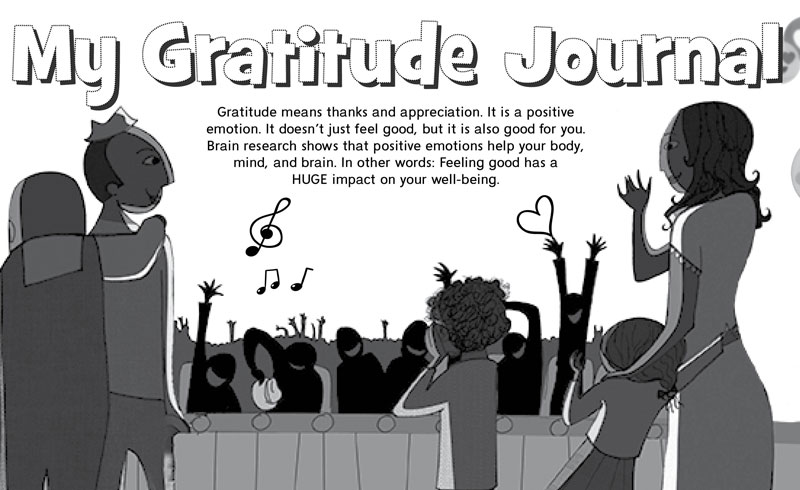
Find this activity in the student portfolio
Objective: Students will understand and express gratitude.
Estimated Duration: 20-25 minutes
Description: Gratitude is an essential skill for students to understand. Gratitude is focusing on what is good in your life and being thankful for the things that you have.
This positive thinking builds a stronger sense of self inside of students. This makes them want to try harder to be successful in the classroom. Students who are grateful tend to be happier, more optimistic, and have a better social network.
They also tend to give more social support to others as well. Being grateful can translate to increased resilience over time. Resilience helps students to have a sense of purpose as well as enjoyable and connected lives.
This activity will help students identify the things or people that they are grateful for in their lives. Students will write a journal entry about something or someone they are grateful for and tell why they feel thankful.
Teachable Moments: There are many ways you can help students to understand and express gratitude:
- Lead by example; show students how you express your gratitude to others with your actions and words.
- Practice mindful breathing together, ideally first thing in the morning. Have students take a moment to notice and give thanks their life-sustaining breath.
- Discuss the origin of the food that we eat every day or other things that we use in our everyday lives, such as a desk, a crayon, or scissors. Ask them to think what things or people they think were involved in bringing that food or object into their hands. Reflecting on ways we are all supported and sustained by other things and people can cultivate an appreciation for their things and the people around them.
- Choose a time to express gratefulness together as a class. You might have the class write letters of thanks to another class or visitor you might have had.
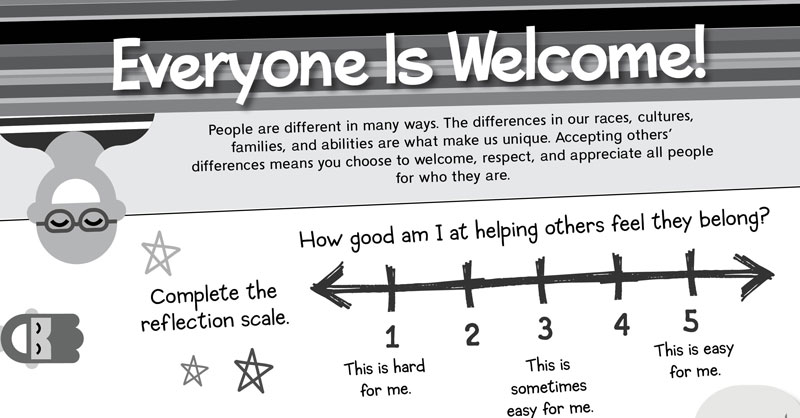
Find this activity in the student portfolio
Objective: Students will be able to understand the importance of helping others and themselves feel a sense of belonging.
Estimated Duration: 20 minutes
Description: Because students come from a variety of backgrounds and experiences, it is important that each child feels a sense of belonging.
Students who experience a positive sense of belonging are more likely to experience positive engagement and wellbeing. Teaching practices should include lessons that focus on the belief that while we are all different, we are also equal and deserving of inclusion and respect.
All students need and deserve a safe and supportive space that enables learning. Providing students that space sends a powerful message: we all belong.
This activity will allow students to reflect on how they help others feel like they belong. They will rate themselves and share what they can do to make others feels welcome.
Teachable Moments: There are many ways you can help students feel a sense of belonging:
- Make introductions on the first day of school. Help students get to know each other and you.
- Schedule one-on-one meetings with students to get to know more about them, and they can get to know more about you.
- Shine a light on each student. It is important to model that every child has something special about him or her that we can celebrate. Help your students see each other through your eyes, so they can see each other’s greatness.
- Make sure that each child feels chosen. Pay attention to children who are not always chosen by others. Give that student a task, like passing out papers or walking something to the office and ask that child to pick a friend to help him or her.
- Brainstorm ground rules with your students to foster a sense of community in the classroom and establish respect and fair treatment.
- Solicit input from all students. Not every student comes ready to share.
- Practice an attitude of acceptance. Recognize that others have diverse ways, which do not have to change you, but be open to others' ideas.
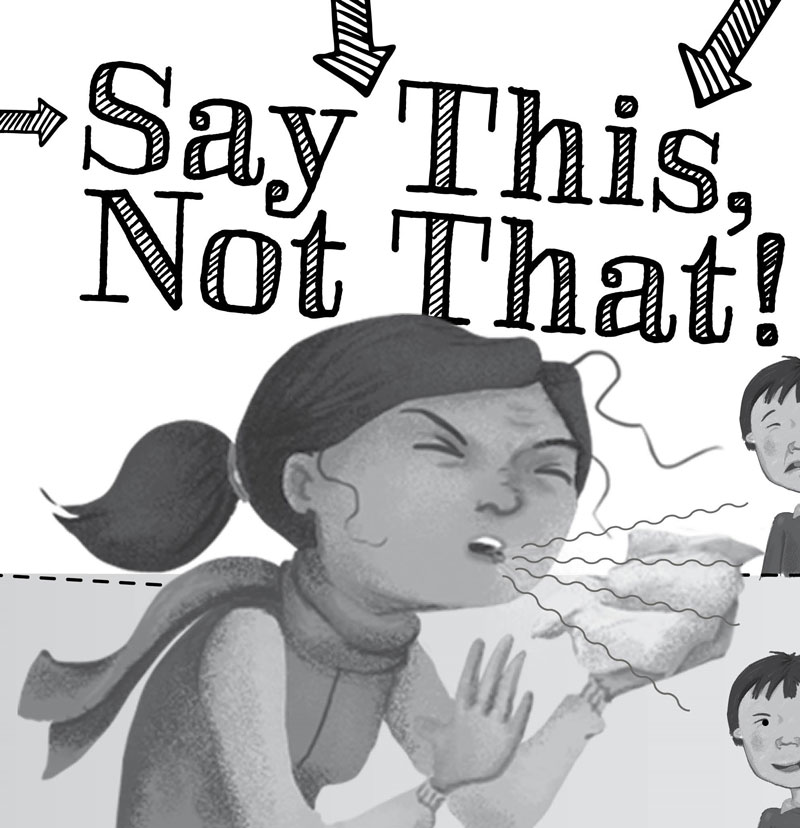
Find this activity in the student portfolio
Objective: Students will be able to understand how to use a social filter in different situations.
Estimated Duration: 20 minutes
Description: Social norms are the unwritten rules or behaviors that are considered acceptable in a particular social group or culture.
Examples include holding a door open for the person behind you or putting your trash in the garbage instead of throwing it on the ground. Social norms give us an expectation for how to behave in certain situations.
One way to help students become socially aware is to teach them the norm of using a social filter. Using a social filter refers to our ability to assess which thoughts we should say aloud and which ones we should keep to ourselves based on the situation are in and the people we are with.
It involves thinking before speaking to ensure we are not saying something inappropriate or hurtful to ourselves and others. Using a social filter can help students build their conversation skills as well as develop and maintain positive relationships with others.
This activity will allow students to practice using a social filter. They will write about a situation when a social filter is needed and then record what they may think versus what they should say.
Teachable Moments: There are many ways you can help students to use a social filter:
- Be a good role model. Explain to students what you are saying and why. Take the time to explain situations where you use your social filter (e.g., at the grocery store, at home with children, in school with coworkers, etc.).
- Get students into the habit of pausing before responding to someone...especially if they are experiencing big emotions. Ask students if what they are about to say will hurt someone or themselves.
- Develop a list of social rules with your students. Ask them to think of times when using a social filter is helpful. Display the rules in your class so students can use it when needed.
- Use a real strainer or funnel to show how a social filter might work. Write down the "thought" and put it in the funnel. Ask students to analyze the thought and decide if it should remain a "thought" or go through the funnel and be words that are heard by others. If it goes through and should be heard, ask students to share how they would "filter the thought."
Foldable®: Shared Moments
Estimated Duration: 25-30 minutes
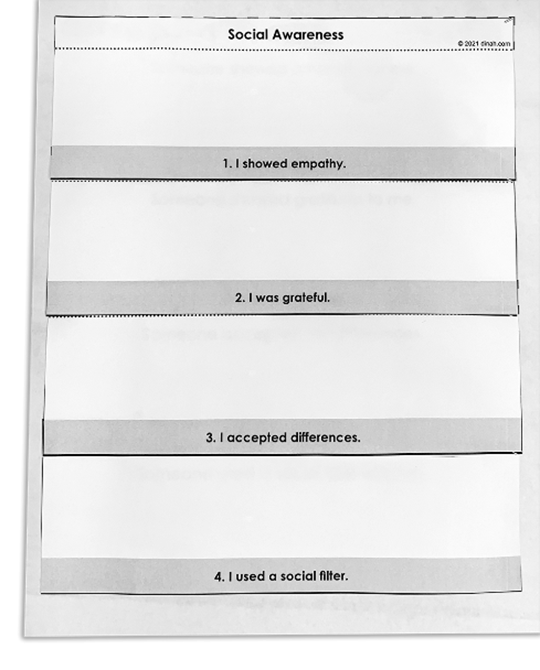
- Cut along the solid black lines to make four rectangular sections.
- Make anchor tabs by folding along the dotted line on each section.
- Glue the four anchor tabs onto the gray strips in the student book. When glued, four layered tabs are formed.
- On the front of the tabs, have students draw or write about moments when they showed empathy, were grateful, accepted differences, and used a social filter.
- Under the tabs, have students record moments when others showed the same moments to them.
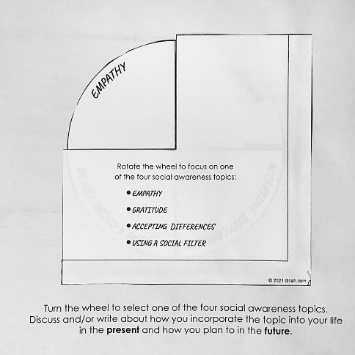
- Cut out the I am socially aware: Pocket and Wheel by cutting along the solid black lines.
- Glue the bottom and right edge of the pocket onto the labeled, gray strips in the student booklet. (Note that unlike anchor tabs, pockets have NO folds.)
- Allow glue to dry a minute before placing the wheel in the pocket. Read the information on the front of the pocket while the glue dries.
- Ask students to rotate the wheel to focus on one of the four social awareness topics. Help students analyze how they can incorporate the selected topic into their life in the future. Discuss the importance of social awareness collectively – with all its parts functioning all the time. Ask students: Do you think this takes practice? Do you think it will always take practice and attention to be your best at social awareness? Why or why not?
Go to other SEL competencies in this book (Intermediate - Grades 3–4):

The teaching suggestions only work in accompaniment with the student portfolio, which has all the activity pages.
The teaching suggestions here are also available within a PDF of the entire teacher's manual.